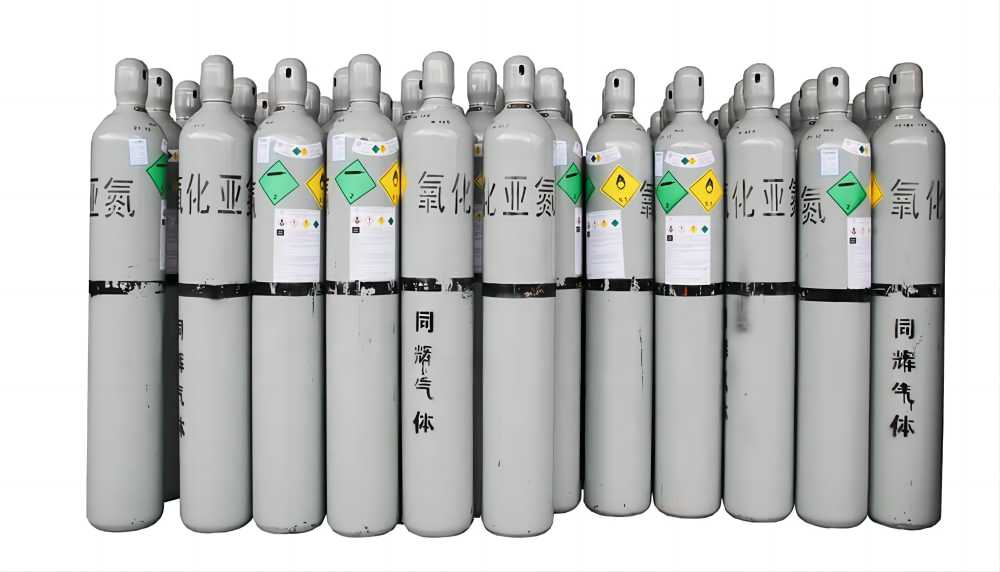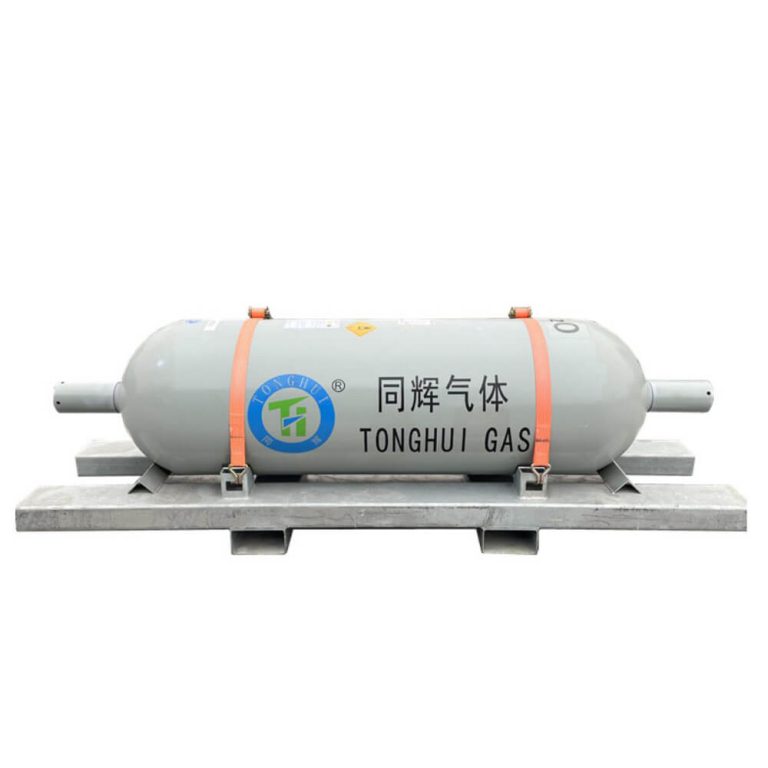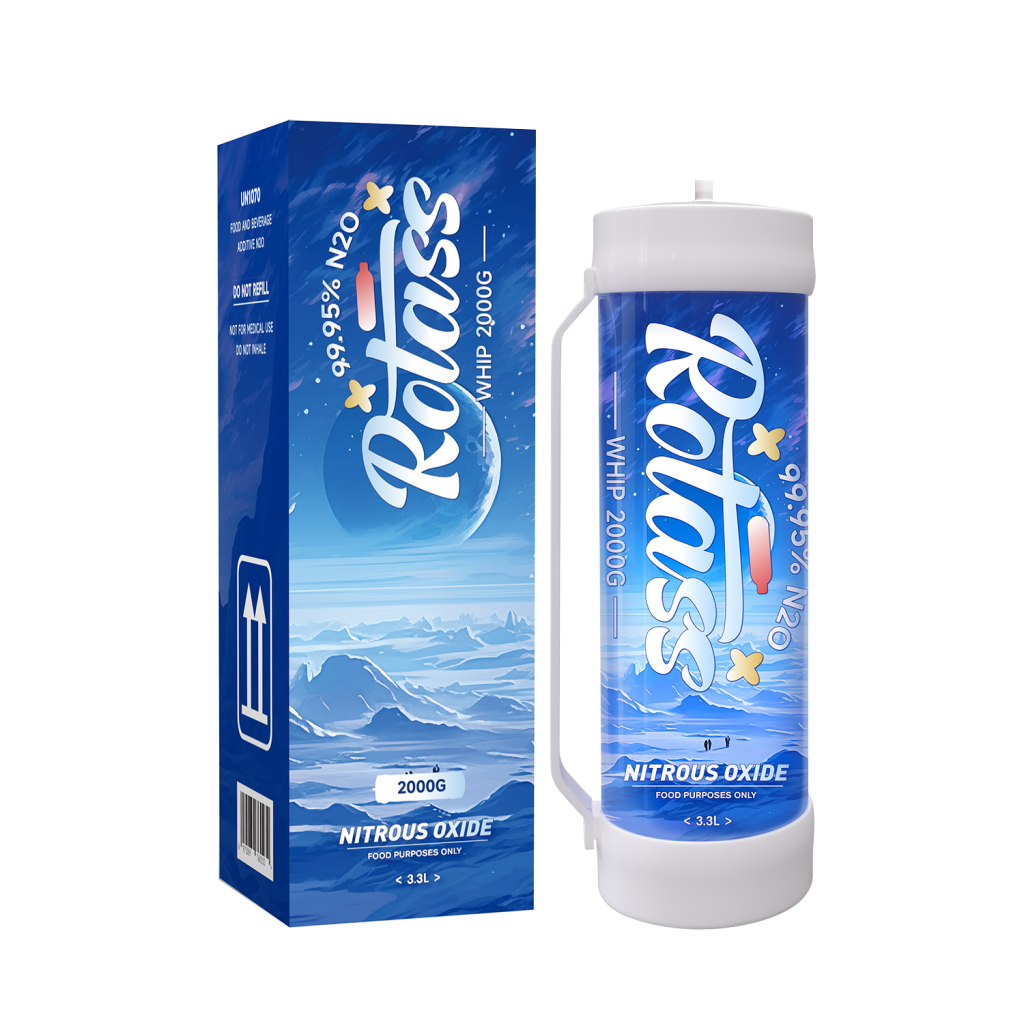2024 / 08 / 26
N2O Tanks: From Food Use to Medical Care
Rotass is a professional gas expert who can provide purity of 99.9% ~ 99.9999% for various applications available in various packaging sizes. Nitrous oxide (N2O) has many uses, from medicine to industry. However, handling N2O safely requires careful attention. This article covers how N2O is used, how to choose the right N2O tank, and how to care for it properly.

Applications of N2O Tanks
Nitrous oxide (N2O), commonly known as laughing gas, has a wide range of applications due to its unique properties. Let’s explore its uses in detail:
Burner
- Fuel additive: N2O can be used as a performance enhancer in internal combustion engines. When injected into the combustion chamber, it decomposes into oxygen and nitrogen. The additional oxygen supports more complete combustion, increasing power output and torque. However, its use in road vehicles is often restricted due to environmental concerns.
- Industrial burners: In certain industrial processes, N2O can be used as a combustion gas in burners. Its high oxygen content can improve combustion efficiency and reduce emissions.
Medicine
- Anesthesia: N2O is a popular anesthetic agent due to its rapid onset and offset of action. It is often used in combination with other anesthetic gases to provide a balanced anesthetic state.
- Pain management: N2O can be administered as part of balanced anesthesia for postoperative pain relief. It can also be used for the management of acute pain in dental procedures.
- Aerosol propellant: N2O is used as a propellant in aerosol cans for medical products, such as whipped cream and nasal sprays.
Semiconductor
- Oxidation and etching: In the semiconductor industry, N2O is employed in various oxidation and etching processes. It is used to grow silicon dioxide layers on silicon wafers, which are essential for transistor fabrication. Additionally, it can be used in plasma etching processes to remove unwanted materials from the wafer surface.
Rocket Oxidizer
- Oxidant: N2O can serve as an oxidizer in rocket propulsion systems. It decomposes into oxygen and nitrogen, providing the necessary oxygen for fuel combustion. While not as powerful as other oxidizers like liquid oxygen, N2O offers advantages such as ease of handling and storage.
Food Additive
- Whipped cream and other aerated products: N2O is used as a propellant and aerating agent in whipped cream cans. It creates a smooth and creamy texture by incorporating air into the product.
- Food processing: N2O can be used as a packaging gas to extend the shelf life of certain foods by displacing oxygen, which can cause spoilage.
It’s important to note that while N2O has various applications, its use can also have negative consequences. For instance, inhaling N2O for recreational purposes can lead to hypoxia, vitamin B12 deficiency, and other health problems.

Key Considerations When Selecting an N2O Tank
When choosing an N2O (nitrous oxide) tank, several critical factors should be carefully considered:
- Material and Corrosion Resistance: The tank should be constructed from materials suitable for long-term storage of high-pressure gases, typically high-strength steel or aluminum alloys. It must exhibit excellent corrosion resistance to withstand the chemical properties of N2O.
- Capacity and Dimensions: Select a tank capacity and size that aligns with your specific application requirements. Ensure it is adequate to meet your usage needs without being excessively oversized.
- Pressure Rating: The tank’s design pressure should exceed the anticipated maximum working pressure to guarantee safe operation.
- Temperature Compatibility: The tank must function reliably within the expected operating temperature range, including low temperatures, as N2O liquefies at low temperatures.
- Safety Features: The tank should be equipped with essential safety devices such as safety valves, burst disks, and pressure gauges to monitor and control internal pressure, preventing overpressure and potential explosion hazards.
- Connections and Interfaces: The tank should have standardized connections and interfaces for easy integration with other system components, ensuring a secure and reliable seal.
- Certifications and Standards Compliance: The chosen tank must adhere to international and domestic safety standards, such as the ASME (American Society of Mechanical Engineers) Boiler and Pressure Vessel Code, and any regional regulations.
- Manufacturer’s Reputation and Service: Opt for a reputable and reliable manufacturer that offers high-quality products and services, including warranties, maintenance guidelines, and technical support.
- Environmental Impact and Sustainability: Consider the environmental implications of the tank. Choose products made from recyclable materials and evaluate their energy efficiency throughout the lifecycle.
By comprehensively evaluating these factors, you can ensure that the selected N2O cylinder optimally meets your application requirements while prioritizing safety and cost-effectiveness. Based on the latest research, these characteristics remain essential considerations when selecting N2O tanks. If you have a specific application or additional requirements, please provide more details for a more tailored recommendation.

Daily Maintenance Precautions for N2O Tanks
When conducting daily maintenance on N2O cylinders, the following precautions should be observed:
- Visual Inspection: Regularly inspect the tank’s exterior for signs of wear and tear, including coating condition, weld defects, corrosion, and physical damage.
- Cleaning and Debris Removal: Periodically clean the interior and exterior of the tank to remove impurities, deposits, and contaminants to prevent corrosion and contamination.
- Corrosion Prevention: Implement appropriate corrosion and rust prevention measures based on the tank’s material and the corrosiveness of the stored substance.
- Seals and Repairs: Regularly inspect and repair tank seals, such as valves, flanges, and gaskets, to ensure leak-free operation.
- Safety Equipment Testing: Periodically test and inspect safety devices on the tank, including safety valves, leak detectors, and gas analyzers, to ensure their proper functioning.
- Storage Condition Maintenance: Maintain appropriate temperature, pressure, and humidity conditions according to the storage substance’s requirements. Adjust and control conditions as needed.
- Monitoring and Record Keeping: Regularly monitor and record operational parameters and performance indicators, such as pressure, temperature, and liquid level, to facilitate timely identification and resolution of issues.
- Training and Personnel Awareness: Provide regular training to operators on maintenance and inspection procedures to enhance their awareness and skills, enabling them to properly operate and maintain the tank.
- Pressure and Safety Valve Checks: Verify that the tank’s operating pressure is within the normal range and that the safety valve functions correctly.
- Leak Testing: Conduct regular leak tests to ensure the tightness of the tank and its connecting pipes.
- Record Keeping and Reporting: Document the results of each inspection, and promptly report and address any identified issues.
- Pressure Relief: Ensure that the tank is depressurized and all inlet and outlet valves are closed during maintenance and inspection to prevent accidental gas release.
- Safety Procedures: Establish a robust tank management system and provide regular safety training to operators to enhance safety awareness.
Adherence to these maintenance procedures and precautions helps ensure the continued safety and performance of N2O tanks while complying with relevant safety regulations and standards. When conducting maintenance and inspections, always follow all applicable safety procedures and consult with a qualified professional if necessary.

Conclusion
N2O cylinders are important for many businesses. This article explains how to choose the right tank, use it safely, and care for it properly. Following these tips will help keep people and the environment safe. N2O tank manufacturer Rotass has collaborates with enterprises including Messer, Linde, and SIMC with an annual production of 60,000 tonnes which means a good choice for you. If you want to get more information about the product please contact us.









